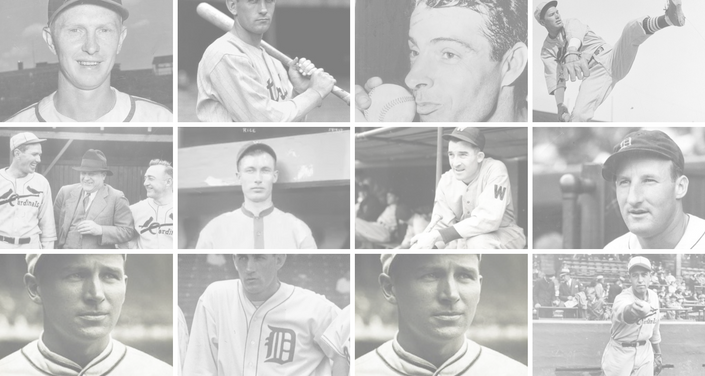Major League Baseball (MLB) has been a staple part of American culture for well over a century. In fact, baseball has such close associations with American culture that it is often referred to as “America’s National Pastime”. This is despite the fact that baseball has arguably been edged out in terms of popularity in recent years by other sports, such as American Football.
Despite this, baseball still holds a unique place in American social, cultural and political life. And from the Civil War to the Civil Rights era and beyond, baseball has both supported and reflected many aspects of American life.
If the user statistics on the most popular sports betting apps are anything to go by, big game days in the MLB season still manage to stir up a huge amount of attention. This is the case even when compared to the betting stats of other popular sports, such as NFL or NHL games.
With that said, however, how has “America’s Pastime” shaped American culture, and what role does it play in the present and future of American life?
Baseball and the Civil War: rebuilding a nation in ruins
Although the amateur version of baseball has roots stretching back to the early 1800s, the first professional games were played in the aftermath of the Civil War.
Newspaper reports as far back as the 1840s describe the popularity of baseball as reaching “mania” levels. And in the context of the Civil War, soldiers on both sides played it whenever they had some downtime.
As the bitter Civil War came to a close, soldiers returning from the front line took the game home with them, which helped to significantly increase its popularity.
As evidence of this, the Civil War hero Abner Doubleday was even credited with inventing the American game of baseball – although this myth has since been disproved.
Nevertheless, the fact that this tale did circulate shows how closely linked the Civil War era and the history of baseball are.
Baseball and race relations
Arguably one of the most profound ways in which baseball has shaped American culture is by facilitating advances in the struggle for racial justice and equality.
Much like many other professional sports at the time, baseball had excluded players of color, both formally and informally.
For baseball, this changed when Branch Rickey of the Brooklyn Dodgers signed up a young Jackie Robinson to play for their top minor league team – the Montreal Royals – in 1946. A year later, Robinson was promoted to the major league team, with April 15, 1947 marking his professional debut.
This date is now known as “Jackie Robinson Day” and commemorates Robinson being the first black player to compete in the American major leagues.
As a mark of respect, all MLB players wear Robinson’s uniform number 42 during any games due to be played on that day. The number 42 is also displayed in major league baseball stadiums across the country. Following his official retirement, the number 42 was retired across all MLB teams.
Despite facing deeply entrenched systemic racism, Robinson conducted himself with a composed determination, and thanks to his efforts, integration across major league baseball was made possible.
Post-9/11 patriotism and solidarity
Following the tragic September 11 attacks, baseball games once again became a meeting place for Americans in need of a sense of solidarity. In this instance, however, they became a vehicle for patriotism and national pride.
In the wake of the attacks, more and more individuals began proudly displaying American flags, as a way of showing their support for the armed forces. This growing patriotism was also present at sporting events.
Not only did American flags become an increasingly common sight at major games, fighter jet flyovers also became more frequent.
Interestingly, while these flyovers had traditionally been reserved for Super Bowl games, they also became commonplace at baseball stadiums. This helped to increase the popularity of major baseball games, with the games themselves becoming slightly more somber, deeply patriotic events.
It seemed that in the wake of the tragedy, Americans were flocking to a traditional pastime that was distinctly American. This itself reflected the changing national mood and sentiment of post-9/11 America – in this sense, once again, we see how baseball reflected the heart of American culture.
Crossing demographic divides
One of the unique characteristics of baseball is that it has somehow managed to cross demographic divides that others have not.
Baseball is equally loved by rural and urban communities, both in terms of supporters of professional teams and at the grass roots level. It also tends to be equally well-liked by both younger and older fans.
In this sense, baseball games act as a meeting point for Americans of all ages and backgrounds. Here, the love for America’s pastime transcends any demographic boundaries – which has helped the sport to grow and continue to be popular.
The ability of baseball to transcend these demographic divides is helped by the nostalgia attached to it. It is also helped by the deep love that baseball fans have for their teams of choice. And nowhere is this love more evident than in the case of the Chicago Cubs, who waited over a century to win a World Series Championship.
It is this combination of deep historical roots and the sense of “‘place” that baseball grounds have that has helped baseball to remain at the beating heart of American culture ever since the first professional games were played.
@ET-DC@eyJkeW5hbWljIjp0cnVlLCJjb250ZW50IjoicG9zdF90YWdzIiwic2V0dGluZ3MiOnsiYmVmb3JlIjoiTGVhcm4gTW9yZSBhYm91dCB0aGUgdGVhbXMsIHBsYXllcnMsIGJhbGwgcGFya3MgYW5kIGV2ZW50cyB0aGF0IGhhcHBlbmVkIG9uIHRoaXMgZGF0ZSBpbiBoaXN0b3J5IC0gLSAtIC0gLSAtIC0gIiwiYWZ0ZXIiOiIiLCJsaW5rX3RvX3Rlcm1fcGFnZSI6Im9uIiwic2VwYXJhdG9yIjoiIHwgIiwiY2F0ZWdvcnlfdHlwZSI6InBvc3RfdGFnIn19@




